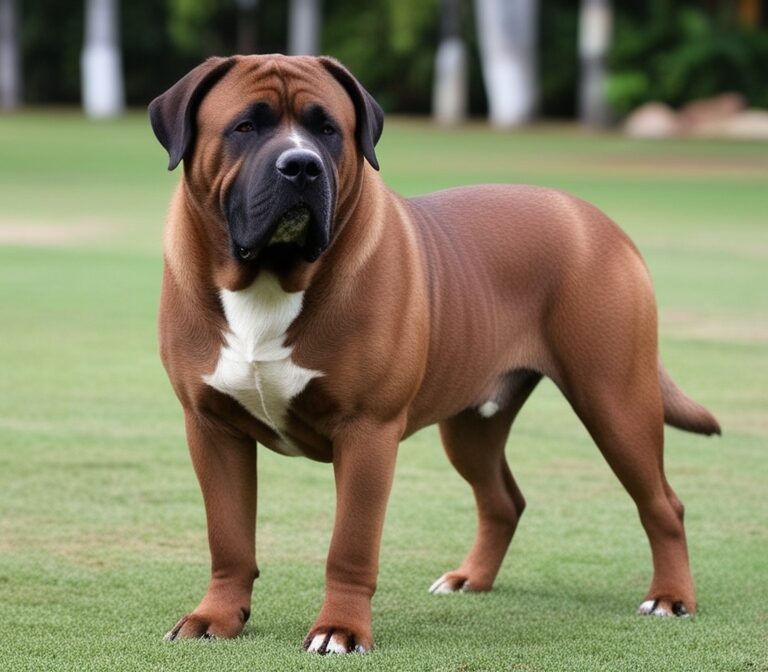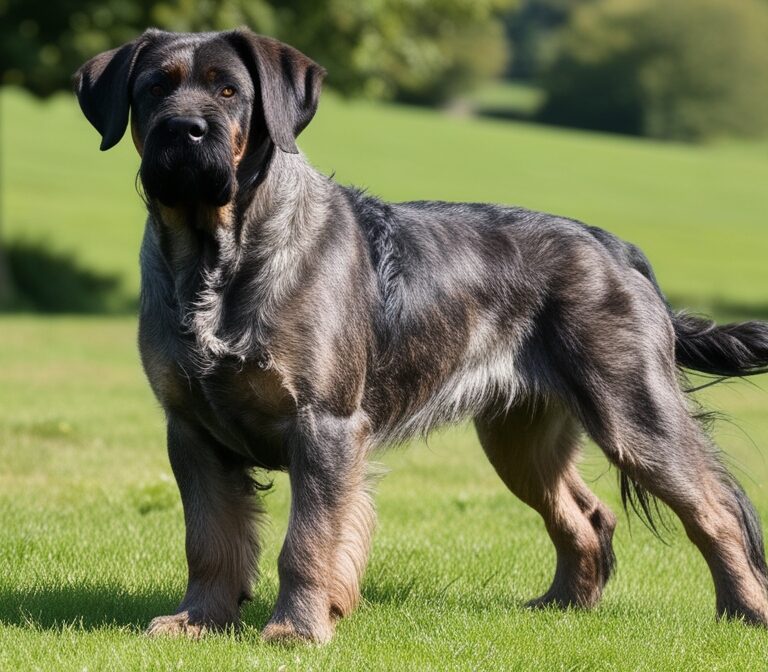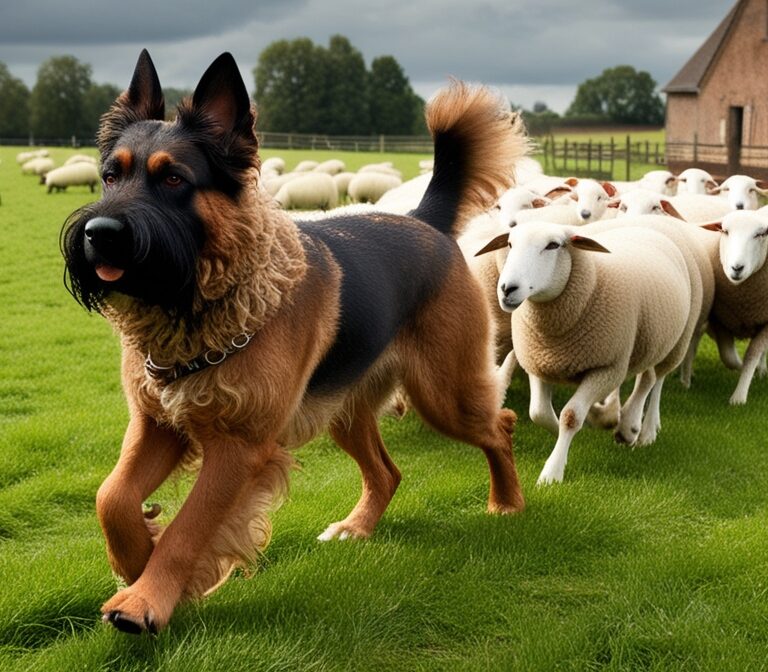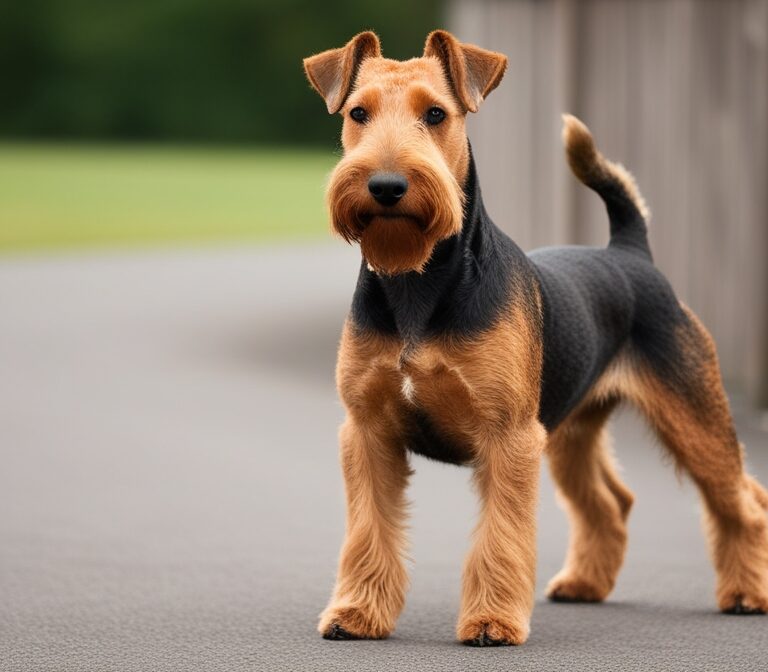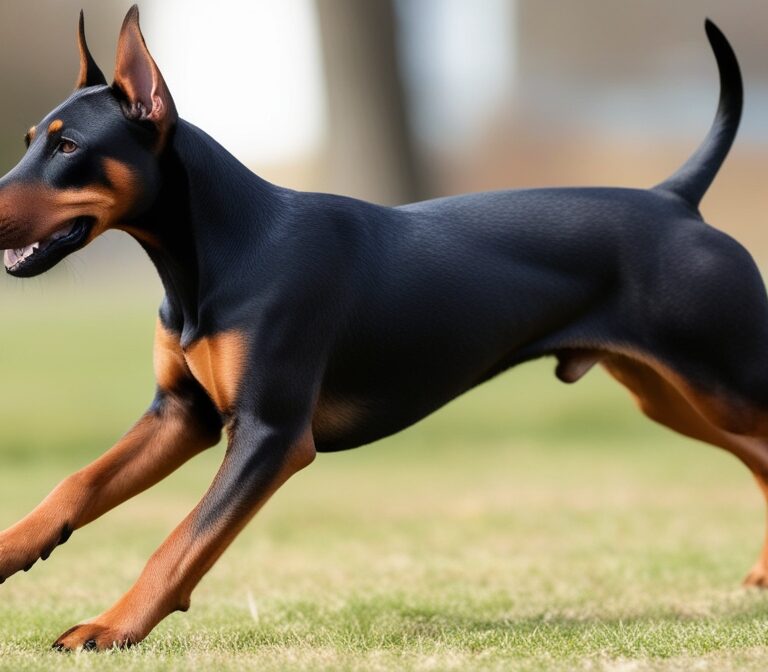Komondor Dog: The Complete Guide to the Hungarian Mop Dog
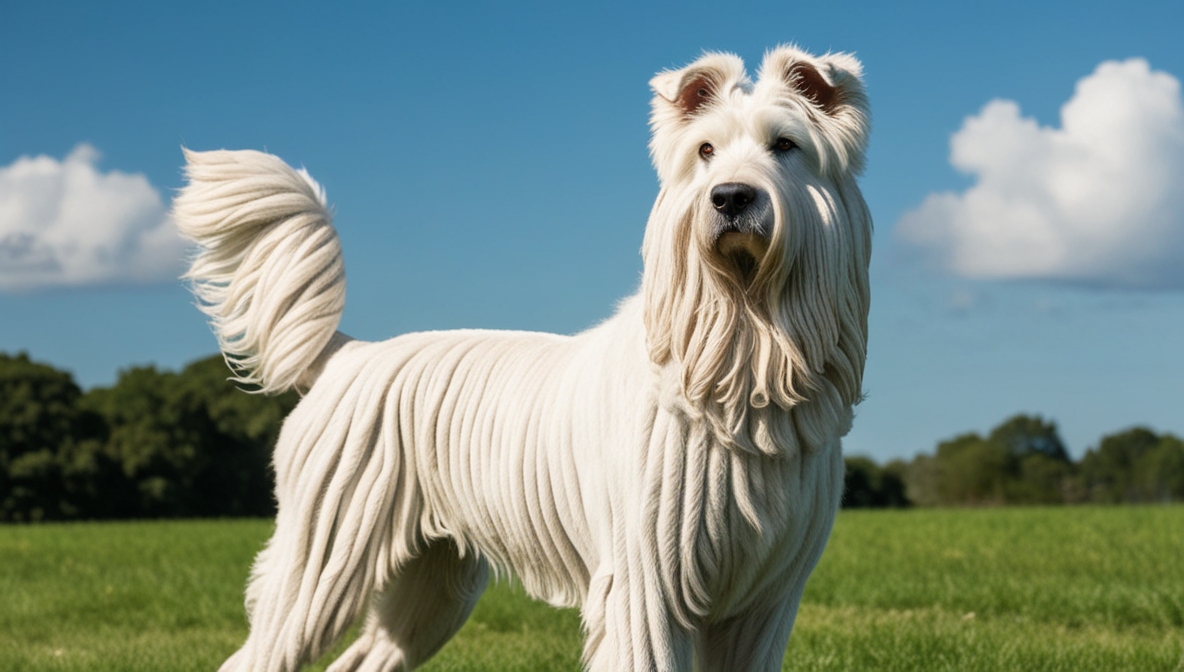
Introduction to the Komondor Dog
The Komondor dog, often called the Hungarian mop dog, is one of the most recognizable and unique dog breeds in the world. Its long, corded coat that resembles mop-like ropes instantly captures attention wherever it goes. However, behind this eye-catching appearance lies a dog with a centuries-old history as a fearless livestock guardian, bred specifically to protect sheep and cattle from wolves, bears, and human intruders.
Unlike many breeds that were developed purely for companionship or aesthetics, the Komondor was shaped by the needs of shepherds and farmers in the harsh landscapes of Hungary. Its thick, corded coat wasn’t a fashion statement but a functional adaptation: it provided insulation against freezing winters and blistering summers, while also serving as armor against predators’ bites. The coat’s white color was intentional as well, allowing the dog to blend in seamlessly with flocks of sheep and surprise attackers.
Today, the Komondor is cherished worldwide not only for its working ability but also for its calm, steady, and affectionate temperament when living with families. Owners admire its mix of independence, courage, and loyalty, qualities that make it both a reliable guard dog and a loving companion. However, the breed’s special needs—particularly grooming and socialization—mean it is not suitable for every household.
In modern times, the Komondor has become more than just a guardian. It is a symbol of Hungarian heritage, a show dog that impresses judges with its dramatic coat, and a rare companion breed for those committed enough to handle its demanding grooming and training needs. Understanding the Komondor fully requires exploring its deep history, physical traits, personality, and the lifestyle that best suits it.
History and Origin in Hungary
The story of the Komondor begins over a thousand years ago, making it one of the oldest livestock guardian breeds in existence. When the Magyar tribes migrated into the Carpathian Basin in the 9th century, they brought with them large, powerful dogs to protect their herds. These early guardians eventually became what we now recognize as the Komondor.
Early Role in Shepherd Life
Hungarian shepherds lived a life of constant vigilance. Their sheep and cattle were targets for wolves, wild dogs, and even human raiders. The Komondor, with its fearsome size and protective instincts, was bred to serve as a nighttime guardian. Unlike herding breeds such as Border Collies that drive livestock, the Komondor’s role was purely defensive: to watch, wait, and protect.
One of the most fascinating aspects of the Komondor’s working role was its autonomy. Shepherds often left Komondors alone with flocks for long periods. The dogs had to make independent decisions—when to bark, when to attack, and when to remain still. This heritage explains the breed’s independent and sometimes stubborn nature today.
Cultural and National Significance
The Komondor quickly became more than a working dog. It was woven into Hungarian folklore and regarded as a symbol of loyalty, strength, and protection. Records show that Hungarian nobility valued the Komondor as a prestigious guardian of estates, while farmers saw it as an essential partner in survival.
So central was the Komondor to Hungarian identity that it has been declared a national treasure, protected by laws that prevent its dilution or extinction. The Hungarian Kennel Club maintains strict breed standards, ensuring that modern Komondors remain true to their heritage.
International Recognition
Although the breed has ancient roots, global recognition of the Komondor came relatively late. The American Kennel Club (AKC) officially recognized the breed in 1937, placing it in the Working Group. However, World War II devastated Komondor populations in Hungary, nearly wiping them out. Dedicated breeders worked tirelessly to rebuild numbers, and today the breed enjoys a small but loyal following worldwide.
The Komondor’s history is not just about dogs—it is about the survival of Hungarian shepherd culture. Owning one is like holding a living piece of history, a guardian shaped by centuries of human and animal struggle.
Physical Characteristics of the Komondor
The Komondor is an imposing and majestic dog with a physical build designed for endurance, power, and resilience. While the most striking feature is undoubtedly its corded coat, the breed’s overall physique contributes equally to its reputation as a fearless livestock guardian.
Size and Proportions
Komondors are large dogs, often described as giants in the working group.
- Height: Males typically stand 27.5 inches (70 cm) or taller at the shoulder, while females average 25.5 inches (65 cm).
- Weight: Males usually weigh between 100–130 pounds (45–60 kg), and females range from 80–110 pounds (36–50 kg).
- Frame: Beneath the heavy coat lies a muscular, athletic body with deep chests, strong legs, and powerful shoulders designed for sudden bursts of speed.
Despite their weight, Komondors are not clumsy. They can move with surprising agility, a necessary trait when facing off against predators like wolves.
The Corded Coat
The corded coat is the Komondor’s most defining feature. Puppies are born with soft, fluffy fur. Around 8–10 months of age, the fur begins to mat and twist into cords. By adulthood, the coat consists of long, rope-like cords that can reach the ground.
- Texture: The cords form from a combination of coarser outer hair and soft undercoat intertwining.
- Length: Fully grown cords can measure over 10 inches long.
- Weight: The coat itself can weigh several pounds, adding to the dog’s already massive presence.
This unique coat provides several benefits:
- Protection: Acts as armor against bites and weather extremes.
- Camouflage: Blends in with sheep, surprising predators.
- Insulation: Keeps the dog cool in summer and warm in winter.
However, it also brings challenges. Bathing a Komondor is notoriously difficult, as drying can take up to 24 hours. The cords must be manually separated to prevent matting, and regular care is essential to avoid odors and skin infections.
Head, Eyes, and Expression
Behind the curtain of cords, the Komondor has a large, broad head with a strong muzzle. The eyes are typically dark brown and carry an intelligent, alert expression. Ears are medium-sized and hang downward, blending into the coat. Despite their sometimes serious appearance, Komondors often display gentle, affectionate expressions with their families.
Gait and Movement
When moving, the Komondor has a purposeful, steady gait. Although the heavy coat might make it look slow, the breed is capable of explosive speed when needed, an essential trait for chasing predators away from livestock.
The physical traits of the Komondor—size, coat, and movement—combine to create one of the most formidable and unique dog breeds in existence.
The Distinctive Corded Coat
The corded coat of the Komondor is not only a visual spectacle but also a functional masterpiece of natural evolution and selective breeding. Unlike most breeds whose coats shed or require trimming, the Komondor’s coat locks into dense, rope-like cords that serve as a shield against predators and a buffer against harsh weather conditions.
Formation of the Cords
Komondor puppies are born with a soft, fluffy white coat. As they grow, usually around 8 to 10 months of age, the coat begins to change. The soft undercoat tangles naturally with the coarser outer coat, forming incipient mats. Owners must assist this process by separating the mats into cords, encouraging the iconic dreadlock-like look. By the time the dog reaches adulthood, the cords are fully developed and can hang all the way to the ground.
Benefits of the Corded Coat
- Camouflage: The white coat mimics the appearance of sheep, making the dog less noticeable to predators. Wolves or stray dogs may approach thinking the Komondor is part of the flock, only to be surprised when it strikes.
- Armor: The thickness of the cords makes it difficult for predators to bite through, protecting vital areas.
- Weather Protection: The cords provide insulation against both freezing winters and hot summers on the Hungarian plains.
Grooming Requirements
The beauty of the Komondor coat comes with significant responsibilities.
- Cord Maintenance: Owners must regularly separate cords to prevent them from matting together into unusable clumps.
- Bathing Challenges: Bathing is possible, but drying can take 12–24 hours due to the density of the cords. Many owners use high-velocity dryers and rotating fans.
- Shedding: Unlike double-coated breeds, Komondors do not shed in the traditional sense. Instead, hair loss occurs within the cords themselves.
Misconceptions About the Coat
A common misconception is that the coat is purely ornamental. In reality, it was engineered by necessity. Another myth is that it is dirty or unhygienic; in truth, a well-cared-for Komondor is clean, odor-free, and less prone to shedding allergens than fluffy-coated breeds.
The coat is both the breed’s greatest asset and greatest challenge, making the Komondor a breed only for owners prepared to commit to serious grooming routines.
Temperament and Personality
The Komondor is not just a striking figure—it is also known for its balanced, loyal, and protective temperament. Over centuries, the breed has been refined into a natural guardian, blending independence with deep affection for its human family.
Protective Instincts
The Komondor’s most defining personality trait is its protective instinct. Unlike breeds that bark excessively at every sound, the Komondor is deliberate. It will calmly assess a situation before reacting, and when it does, it reacts decisively and fearlessly. This makes it one of the most effective watchdogs in the canine world.
Family Bonding
Despite its size and guardian nature, the Komondor is often described as a gentle giant with its family.
- With children, it tends to be patient and watchful, often positioning itself between the child and perceived threats.
- With adults, it forms strong attachments and thrives on being part of family routines.
Independence and Stubbornness
Bred to guard flocks without human direction, the Komondor is an independent thinker. While this makes it intelligent, it also leads to stubbornness. Owners must respect this trait, providing guidance without expecting unquestioning obedience like from a Labrador Retriever or Golden Retriever.
Socialization Needs
Without early socialization, Komondors may become overly suspicious of strangers and other dogs. Exposure to different environments, people, and experiences during puppyhood is essential to develop a well-rounded personality.
The Komondor is thus a dog of dual nature: affectionate and calm at home, but alert and commanding when its protective instincts are called upon.
Komondor as a Livestock Guardian
The Komondor’s historical role as a livestock guardian dog is central to its identity. Unlike herding dogs such as the Australian Shepherd or Border Collie, which actively move flocks, the Komondor’s role was purely defensive: to stand guard and deter threats.
Guardian Instincts in Practice
Komondors do not require training to guard—they are born with the instinct.
- Predator Deterrence: Their imposing size and bark alone often drive away wolves or stray dogs before physical confrontation occurs.
- Vigilance: Komondors are nocturnal by nature, often patrolling at night while livestock rest.
- Decision-Making: They evaluate threats independently, deciding when to bark, chase, or fight.
Modern Guardian Roles
Even today, Komondors are used in Hungary and parts of North America to guard:
- Sheep and goat farms
- Cattle ranches
- Free-range poultry farms
Some farmers report that having a Komondor reduces livestock losses by up to 80%, making them an invaluable partner in agriculture.
Transition to Home Guardians
When placed in modern homes, Komondors naturally transfer their guardian instincts to families. They watch over children, alert owners to strangers, and protect properties with unmatched dedication. However, this instinct also means they must be trained and socialized to distinguish between real threats and everyday visitors.
The Komondor’s guardian role is not a matter of training—it is in its genetic blueprint, making it one of the most reliable protection breeds in history.
Training the Komondor
Training a Komondor requires a specialized approach that respects the breed’s independence while ensuring obedience and social responsibility.
Early Socialization
Socialization should begin as early as 8 weeks old. Expose the puppy to:
- Different people (men, women, children).
- Environments (parks, busy streets, farms).
- Other animals (friendly dogs, cats, livestock).
This prevents the Komondor from becoming overly protective or fearful of unfamiliar situations.
Obedience Training
Basic commands such as sit, stay, come, and down are essential for safety, especially given the breed’s size and strength. Training should use:
- Positive reinforcement: Rewards like treats, praise, and play.
- Consistency: Daily practice sessions of 10–15 minutes.
- Firm but gentle guidance: Harsh methods can backfire, leading to resistance.
Advanced Training
For working Komondors on farms, advanced training may include boundary recognition, livestock bonding, and recall under distractions. In homes, training should focus on polite behavior with guests and walking calmly on a leash.
Training Challenges
- Stubbornness: Their independent mind may lead to selective listening.
- Guarding Behavior: They may bark at harmless strangers if not taught otherwise.
- Slow Maturity: Komondors take up to 3 years to fully mature, requiring extended training consistency.
Komondors are not for novice owners. They thrive with experienced handlers who understand guardian breeds and are willing to invest time, patience, and leadership.
Exercise and Activity Requirements
Despite their massive size and guardian role, Komondors are not hyperactive dogs. Their exercise needs are moderate but essential for health and mental well-being.
Daily Exercise
- Walks: 30–60 minutes of walking per day keeps them fit.
- Playtime: Secure yards allow them to patrol and explore.
- Mental Stimulation: Puzzle toys, obedience drills, and problem-solving tasks prevent boredom.
Farm Life vs. Urban Life
- Farm Settings: On farms, Komondors self-regulate their activity by patrolling and monitoring livestock. This natural work often fulfills their exercise needs.
- Urban Homes: In cities, Komondors require scheduled exercise. Without it, they may become restless or destructive.
Exercise Precautions
Because of their thick coats and large size, Komondors are prone to overheating. Exercise should be scheduled during cooler times of day, and plenty of water and shade must be available.
A well-exercised Komondor is calm, content, and reliable, but neglecting their activity can lead to behavioral problems such as excessive barking, digging, or anxiety.
Diet and Nutrition Guidelines
The diet of a Komondor dog plays a crucial role in maintaining its overall health, supporting its massive frame, and keeping its iconic coat in prime condition. Being a large working breed, the Komondor requires food that balances energy, protein, fat, and micronutrients.
Caloric Needs
Adult Komondors typically consume 1,600–2,000 calories per day, depending on their size, age, and activity level. Active farm guardians may need up to 2,400 calories, while house pets might require less. Overfeeding must be avoided, as excess weight strains their joints and increases the risk of hip dysplasia.
Protein Requirements
Protein is the cornerstone of a Komondor’s diet. At least 22–26% crude protein is recommended in dry dog food formulas. Quality protein sources include:
- Chicken, turkey, beef, or lamb
- Fish (salmon and sardines for omega-3s)
- Eggs as an occasional supplement
Protein supports muscle strength and coat health, both vital for a working guardian breed.
Fat and Energy
Healthy fats provide sustained energy and keep the corded coat shiny and resilient. Diets should include 12–16% fat content, sourced from:
- Fish oil
- Flaxseed oil
- Chicken fat
Omega-3 and Omega-6 fatty acids also reduce inflammation, supporting joint health and preventing skin dryness.
Joint and Bone Support
Large breeds like the Komondor are prone to joint problems. Supplements such as glucosamine, chondroitin, and MSM should be introduced by the time the dog reaches adulthood. Calcium and phosphorus levels must be carefully balanced to avoid bone deformities during puppyhood.
Feeding Schedule
- Puppies: 3–4 small meals daily to support rapid growth.
- Adults: 2 meals daily, with portions divided to prevent bloating.
- Seniors: Smaller, more frequent meals with reduced calories but higher joint support.
Foods to Avoid
Certain foods are toxic or harmful to Komondors:
- Grapes and raisins (cause kidney failure)
- Onions and garlic (damage red blood cells)
- Cooked bones (risk of splintering)
- Excessive fatty scraps (cause pancreatitis)
A carefully managed diet ensures the Komondor remains strong, agile, and able to fulfill its role as both guardian and family companion.
Common Health Issues in Komondors
While the Komondor is generally a robust and healthy breed, it shares vulnerabilities common to large, fast-growing dogs. Awareness and prevention are essential for extending the breed’s lifespan.
Hip Dysplasia
One of the most common conditions in Komondors is hip dysplasia, where the hip joint doesn’t develop properly. This leads to arthritis, pain, and mobility issues. Responsible breeders screen for this condition, and maintaining a healthy weight helps reduce the risk.
Bloat (Gastric Dilatation-Volvulus)
Bloat is a life-threatening emergency in large, deep-chested dogs like the Komondor. It occurs when the stomach twists and traps gas, cutting off blood flow. Symptoms include:
- Distended abdomen
- Restlessness
- Drooling and retching without vomiting
Preventive steps include feeding smaller, frequent meals and avoiding vigorous exercise right after eating.
Skin and Coat Issues
Because of their dense, corded coats, Komondors are susceptible to skin infections if cords are not properly maintained. Moisture trapped within the coat can cause fungal infections, so regular inspection and grooming are vital.
Ear Infections
Their drop ears can trap moisture, leading to ear infections. Weekly cleaning with vet-approved solutions reduces risk.
Eye Problems
Some Komondors may develop entropion, where the eyelid rolls inward, irritating the eye. Surgery is sometimes needed to correct it.
Longevity of Health
With proper nutrition, grooming, and veterinary care, many Komondors live long, healthy lives. Regular checkups—ideally twice a year for adults—ensure issues are caught early.
Life Expectancy and Senior Care
The average lifespan of a Komondor is 10–12 years, typical for giant breeds but still respectable considering its size and working background. Reaching the upper end of this lifespan depends on genetics, diet, exercise, and healthcare.
Senior Nutrition
Older Komondors need diets lower in calories but rich in nutrients supporting:
- Joint health (glucosamine, chondroitin)
- Heart health (omega-3 fatty acids, taurine)
- Cognitive function (antioxidants and DHA)
Switching to a senior dog food formula around age 7–8 can help maintain energy without causing weight gain.
Exercise for Seniors
Older Komondors remain protective but tire more easily. Exercise routines should include:
- Shorter, gentler walks twice daily
- Light play in secure areas
- Swimming as a low-impact activity (if they enjoy water)
Common Senior Issues
- Arthritis: Common due to size and hip dysplasia risk.
- Vision and hearing loss: Aging Komondors may rely more on smell.
- Cognitive decline: Some develop canine dementia, but mental stimulation helps slow it.
Palliative Care
Owners of senior Komondors should focus on comfort and quality of life. Soft bedding, pain management, and mobility aids can extend the dog’s comfort during its final years.
Living Conditions and Suitability
The Komondor is not a breed suited to every environment. Its needs are shaped by its guardian instincts, size, and coat requirements.
Ideal Homes
- Rural Properties: Farms and ranches provide space for the Komondor to patrol and fulfill its guarding instinct.
- Suburban Homes: Large, securely fenced yards can work if owners dedicate time to exercise and stimulation.
Poorly Suited Homes
- Small Apartments: Limited space and constant exposure to strangers make Komondors anxious and restless.
- Busy Urban Centers: Their guarding instincts may clash with high human traffic and noise.
Space and Security
A Komondor thrives when it has a clear job, whether guarding livestock or property. Fencing must be strong and tall, as they are capable jumpers and may attempt to chase intruders.
Climate Considerations
Their thick cords insulate them in both cold and heat, but in hot climates, overheating is a risk. Owners must provide shade, water, and avoid overexertion during peak heat.
Komondors do best in households that respect their history as working guardians and are willing to provide the space and structure they need.
Komondor with Children and Pets
The Komondor’s affectionate and protective temperament extends naturally to children and other animals within the family, but supervision and training are key.
With Children
- Protective Role: Komondors often act like nannies, placing themselves between children and perceived dangers.
- Gentle Nature: Despite their size, they are careful around kids, though supervision is necessary to prevent accidental knocks.
- Stranger Caution: They may be wary of children’s friends or visiting relatives unless properly socialized.
With Other Dogs
Komondors can live peacefully with other dogs they are raised with. However, their dominant guardian nature may cause conflict with unfamiliar or same-sex dogs. Early introductions and clear leadership from the owner help.
With Cats and Livestock
Many Komondors coexist well with cats if introduced early. On farms, they bond deeply with sheep, goats, or poultry, treating them as part of their “family unit.” However, proper introductions are vital to prevent initial suspicion.
The Komondor is generally reliable with those it considers part of its flock, whether that means children, other pets, or livestock.
Comparisons with Similar Breeds
The Komondor shares traits with other livestock guardian breeds, but its corded coat makes it stand apart.
Komondor vs. Puli
The Puli, another Hungarian breed, also has a corded coat but is much smaller and primarily a herding dog. While the Komondor guards, the Puli drives livestock. Both share Hungarian origins but serve different purposes.
Komondor vs. Kuvasz
The Kuvasz, also Hungarian, is similar in size and temperament but has a straight, fluffy white coat instead of cords. Kuvaszok are sometimes mistaken for Komondors, but their coats require different grooming and offer less predator protection.
Komondor vs. Great Pyrenees
The Great Pyrenees is a popular guardian breed with a long, fluffy white coat. Unlike the Komondor, it does not cord. Great Pyrenees are slightly more sociable with strangers, while Komondors are more reserved.
Komondor vs. Old English Sheepdog
The Old English Sheepdog shares a shaggy appearance but is primarily a herding breed. Unlike Komondors, it is more playful and less protective.
In comparison, the Komondor is unique because of its armor-like cords, powerful independence, and strong guarding instincts. No other breed combines all of these traits so perfectly.
